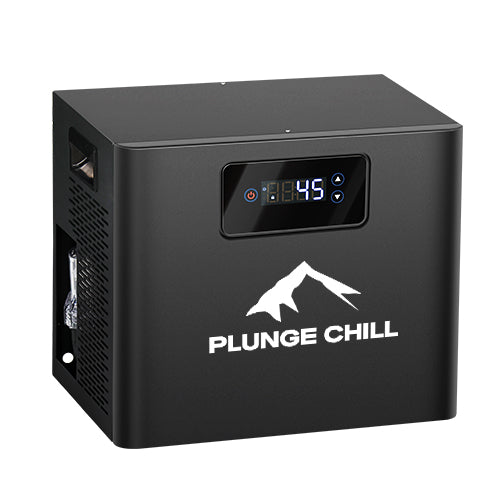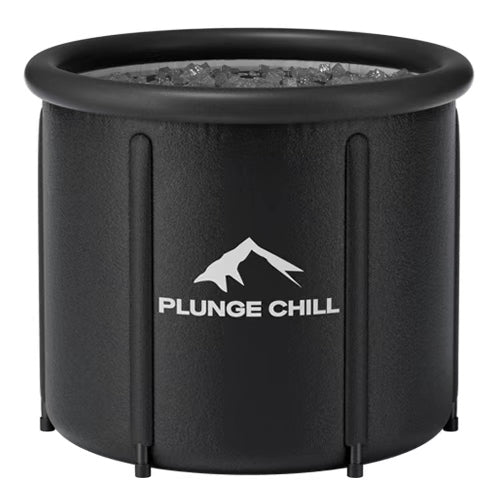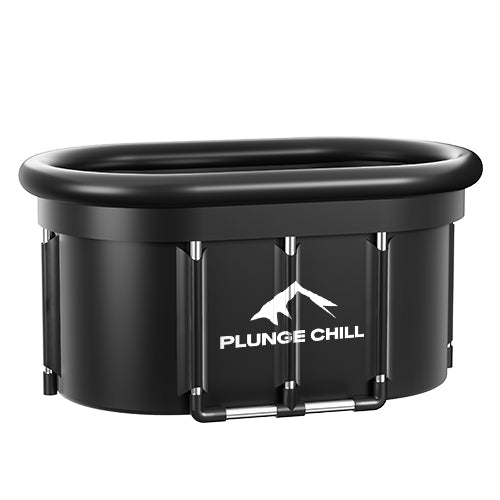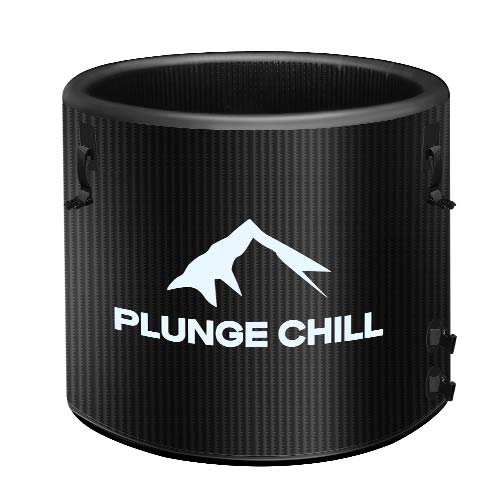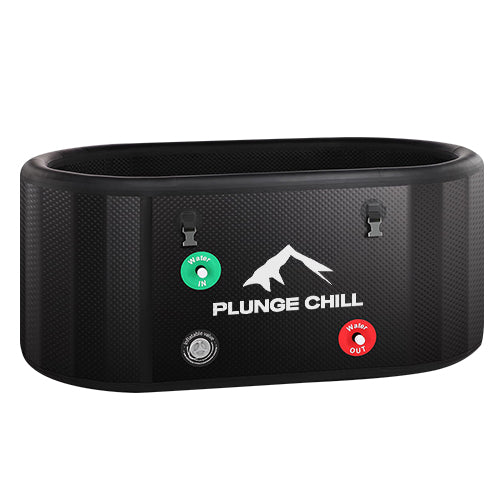Cold exposure has moved from fringe wellness to mainstream curiosity, yet the simple question people ask—how long does it take to adapt to cold—does not have a single timeline. The answer depends on which form of adaptation you mean: a fast reduction in perceived chill and shivering, a slower metabolic shift that recruits brown adipose tissue, or the much longer, population-level changes that biologists call evolutionary adaptation. As an editor who styles jewelry shoots in Nordic winters and consults clients on winter comfort, I see these timelines play out on real hands and necklines: rings fit differently within minutes outdoors, while people who spend a few weeks embracing mild cold often report that everyday winter air feels far less hostile. Below, I synthesize what clinical and physiological literature says about the duration, mechanisms, and limits of cold adaptation, and I close with practical guidance—including winter jewelry care and buying tips—to make your cold season both safer and more comfortable.
What “Cold Adaptation” Actually Means
Physiologists use several terms with distinct meanings. Adaptation is the umbrella concept for changes that reduce environmental strain. Acclimation refers to controlled, lab-like exposures that induce change, while acclimatization refers to natural, seasonal or geographic exposure. Habituation describes a reduced response to a repeated stimulus; in cold, that shows up as lower shivering, higher skin temperature, and a blunted blood pressure surge during mild exposures, even when core temperature does not fall. These definitions follow standards described in a review published by Taylor & Francis.
Two heat-production mechanisms recur in human cold defense. Shivering thermogenesis is the involuntary muscle activity that can raise metabolic rate several-fold. Non‑shivering thermogenesis is the increase in heat production without noticeable shivering, a component often linked to activation of brown adipose tissue. A related peripheral phenomenon is cold‑induced vasodilation—the periodic rewarming of digits that occurs during prolonged cold, thought to mitigate local cold injury risk. These mechanisms and their energetic costs are described in detail in the NCBI Bookshelf and in clinical reviews.
The Body’s First Minutes in the Cold
The hypothalamus acts as the control center, integrating skin and core signals and driving quick responses. Within minutes, cutaneous vasoconstriction reduces blood flow to the skin to conserve core heat, and shivering begins if thermal balance requires additional heat. Even very small changes in blood temperature—less than a degree Celsius—can trigger corrective responses, as summarized by ClinMed Journals, and air versus water matters enormously. Because water accelerates convective heat loss roughly seventyfold compared with air at the same temperature, a shower or plunge imposes much higher thermal strain than a cold walk at the same nominal temperature, a fundamental point in the NCBI Bookshelf chapter.
Cardiovascular and respiratory systems react in parallel. Early sympathetic activation raises blood pressure and primes muscles for shivering; with deeper cooling, heart rate slows, conduction intervals lengthen, and serious arrhythmias become more likely as core temperature drops toward the low thirties and below. ClinMed Journals emphasize that profound hypothermia can produce bradycardia, atrial and ventricular dysrhythmias under 86℉, and asystole near 77℉, which is one reason clinical teams use rectal core temperature to guide decisions. For healthy individuals practicing deliberate cold exposure, these clinical thresholds are far below routine wellness practices, yet they illustrate why protocols should remain conservative and why people with cardiovascular conditions should seek medical advice before pursuing intense or prolonged cold.

From Days to Weeks: How Long Until You Feel Different?
Habituation: the quick win measured in days to a few weeks
The fastest change most people experience is habituation. Repeated mild exposures that cool the skin without meaningfully lowering core temperature can blunt the sensation of cold and the autonomic surge that typically accompanies it. A Taylor & Francis review details how this shows up as higher skin temperature during exposure, lower shivering, reduced catecholamine release, and a smaller blood pressure response. In controlled acclimation, a classic experimental schedule—four hours a day at 50℉ for twenty‑one days—produced higher resting metabolism, smaller core temperature drops during acute stress, reduced shivering, improved cold‑induced vasodilation, and a milder blood pressure rise to cold pressor testing in a cohort of healthy soldiers, according to an abstract archived by ADS. Outside the lab, meteorology reporting has suggested that many people notice comfort improvements within two to three weeks of seasonal acclimatization, and first‑person accounts note practical comfort gains inside a month when clothing systems are optimized. These non‑clinical observations align with the laboratory evidence that habituation emerges first, ahead of deeper metabolic remodeling. Confidence in the laboratory timeline is high; confidence in the general-population timeline is moderate because real-world routines vary.
Metabolic acclimation and brown fat: usually weeks to months, and highly individual
Metabolic acclimation follows a slower arc. Reviews in PubMed Central and Frontiers in Physiology report that short‑term cold (minutes to weeks) acutely raises metabolic rate via sympathetic activation, while longer patterns of exposure are associated with sustained thermogenesis linked to brown adipose tissue activity. Over time, autonomic balance often shifts: heart rate variability that initially dips with sympathetic dominance can stabilize or improve with ongoing adaptation, resting heart rate may decrease, and endothelial function can improve. Blood rheology can also change: winter swimmers studied longitudinally showed an eight‑percent reduction in blood viscosity and lower fibrinogen, consistent with more favorable flow characteristics, according to PubMed Central. That said, responses are variable. Some individuals show metabolic compensation that partially offsets increased thermogenesis, and not everyone develops pronounced non‑shivering thermogenesis. Based on the medical literature, confidence in the direction of change is moderate, while confidence in precise time-to-effect for any individual is low to moderate given the known variability.
Evolutionary adaptation: measured in generations, not seasons
There is an important ceiling on what a single person can achieve. A synthesis in PubMed Central distinguishes short‑term acclimation in individuals from population‑level cold adaptations that accrued over millennia in groups living in severe climates. Meaningful increases in insulation and high, sustained metabolic heat production appear in those populations, while within a normal lifetime in temperate or arctic settings, human acclimation tends to be modest and strongly supported by behavior—clothing, shelter, and activity—rather than wholesale physiological transformation. By contrast, heat acclimation in the same literature is comparatively robust and can double sweat capacity within weeks. Confidence in this contrast is high across multiple sources.

A Quick Map of Timelines and Markers
|
Adaptation stage |
Primary mechanism |
Typical duration |
Practical marker |
Evidence source |
|
Acute cold defense |
Vasoconstriction and shivering |
Minutes to hours |
Rapid skin cooling, visible shivering |
ClinMed Journals; NCBI Bookshelf |
|
Habituation |
Blunted autonomic response without core drop |
Days to a few weeks |
Less shivering and perceived chill at the same stimulus |
Taylor & Francis review; ADS soldier protocol |
|
Metabolic acclimation |
Non‑shivering thermogenesis, autonomic rebalance |
Weeks to months |
Lower resting HR, steadier HRV, warmer feel at rest |
PubMed Central reviews; Frontiers in Physiology |
|
Population adaptation |
Insulation and metabolic characteristics fixed by selection |
Many generations |
Group‑level traits rather than within‑life change |
PubMed Central synthesis |
Time spans are approximate and depend on stimulus intensity, frequency, and individual variability. Confidence is high for the existence of each stage and moderate for the durations in everyday life.

What Changes Under the Hood
Cardiovascular regulation and hemorheology
The earliest days of cold exposure are dominated by sympathetic drive, which can lower heart rate variability and raise blood pressure variability in the high‑frequency range. With continued exposure, HRV often stabilizes or improves, and both resting heart rate and blood pressure can trend downward, consistent with a shift toward better autonomic balance. Blood itself changes its flow behavior over time. PubMed Central summaries describe initial increases in viscosity and red blood cell aggregation that raise cardiac workload during acute cold, followed by improvements with long‑term exposure, including increased red cell deformability and improved flow in winter swimmers. These observations suggest that some cardiovascular strain in the early period gives way to more efficient regulation as acclimation proceeds. Confidence is moderate, with consistent directionality and variable magnitude.
Metabolic substrate use and energy cost
Staying warm is expensive. The NCBI Bookshelf documents two‑ to five‑fold increases in metabolic rate during cold defense and striking shifts in substrate use: carbohydrate oxidation can rise by several hundred percent, while fat oxidation also increases, though to a lesser degree. The oxygen cost of shivering can reach a quarter of maximal aerobic capacity in relatively mild cold water and considerably more in harsher conditions. That is one practical reason to sustain carbohydrate availability during prolonged, cold‑weather work and to recognize that a short ice bath does not replace a meal. Based on experimental data summarized in the same source, these energetic costs are well supported; confidence is high.
Brain, mood, and seasonal factors
Cold affects the brain as much as the body. Cerebral blood flow falls by roughly six to seven percent per degree Celsius drop in core temperature according to ClinMed Journals, which helps explain reduced cognitive efficiency with deeper cooling. On the other hand, seasonal mood symptoms can improve with light therapy; a PubMed Central review reports that daily bright light at ten thousand lux for about thirty minutes alleviated seasonal depression symptoms in a majority of participants. Regular cold‑water swimming has been proposed to enhance vagal tone and reduce anxiety responses to cold stress, though responses vary considerably and should not be considered a primary treatment for mental health conditions. Confidence in light therapy efficacy is moderate to high within its indication; confidence in cold‑water swimming for mood is low to moderate due to variability.
A Practical, Safe Path to Cold Acclimation
A conservative plan begins with skin‑level cooling and builds slowly. Ending a warm shower with a short cold interval is a reliable way to introduce the stimulus without risking core temperature dips. Starting with about thirty seconds and adding small increments across days is a common clinical‑adjacent suggestion in mental‑health guidance and provides immediate feedback about tolerance. Daily time outdoors also helps; spending more time in cool air with sensible clothing adjustments allows the nervous system to recalibrate without the shock of water immersion. Media reporting on seasonal acclimatization has described incremental outdoor exposure as a useful tactic; confidence in these practical steps is moderate, as they align with the habituation data and avoid high-risk scenarios.
If you choose water, keep the water “uncomfortably cold but safe,” recognizing that water strips heat rapidly compared with air. Immerse gradually, keep your head and hands out at first if needed, breathe steadily rather than hyperventilating, and avoid going to maximal discomfort. Do not practice alone, especially in open water. Research summaries and science communication outlets have highlighted that cold-water immersion soon after strength training may blunt hypertrophy and strength gains; spacing immersion six to eight hours away from key training is a reasonable hedge if adaptation is your goal, whereas cold showers have a milder impact. Confidence in the direction of this effect is moderate; exact timing recommendations are based on emerging evidence and expert synthesis rather than definitive clinical guidelines.
People with cardiovascular disease, significant respiratory disease, Raynaud’s phenomenon, or those who are pregnant should obtain medical clearance before deliberate cold exposure. ClinMed Journals outline how deep cooling elevates arrhythmia risk and depresses multiple organ systems; while deliberate wellness practices sit far from clinical hypothermia, pre‑existing conditions and medications can narrow safety margins. When in doubt, favor milder exposures and prioritize behavioral defenses such as layering, windproof shells, and activity.
Jewelry-Specific Considerations in the Cold
Cold does not just change how you feel; it changes how jewelry fits and behaves. On photo sets in freezing air, I routinely see ring fit shift within minutes as vasoconstriction reduces finger circumference. Clients who size rings in summer sometimes find them noticeably looser in winter, and bracelets and watches also move more on thinner wrists. Based on bench and styling experience, a comfort‑fit band and a fractionally more secure size can prevent loss in deep winter without sacrificing comfort in shoulder seasons. Confidence is moderate because these are recurring, real‑world observations rather than controlled measurements.
Metal conducts heat efficiently, which is why bare metal against cold skin can feel dramatically colder than fabric or leather. Physics underpins this: conductive and convective losses dominate in cold, and water exposure multiplies the effect. From a practical standpoint, removing metal jewelry for ice baths, winter swimming, or cryotherapy avoids both conductive cold spots and snag risks on towels or robes. This recommendation is a blend of basic thermodynamics and professional experience; confidence is moderate.
Piercings deserve special care in the cold. Cartilage and lobe perfusion fall with vasoconstriction, and very cold air can make fresh or irritated piercings more uncomfortable. Hypoallergenic metals such as titanium, high‑karat gold, and implant‑grade steel tend to remain better tolerated when skin is dry or reactive in winter; confidence is moderate, based on broad studio experience with winter skin. Be aware that sudden swings from cold to very hot—such as moving from an ice plunge to a sauna—can stress certain materials. While jewelers have long cautioned about thermal shock in vulnerable or fracture‑filled gemstones, this is an experience‑based warning rather than a claim supported by the sources cited above; confidence is low to moderate here, and a conservative approach—warming jewelry and skin gradually—is prudent.
For necklaces and bracelets, winter is a season for robust clasps and slightly thicker chains. Gloves and scarves complicate fine motor tasks, and a larger lobster or well‑engineered magnetic clasp helps with on‑off transitions without tools. If you wear layered necklaces over knits, consider lengths that clear collars so pendants do not rest against bare skin that is being cooled by wind. These are practical, non‑medical adjustments that reduce fumble time and loss risk; confidence is high from repeated use in styling and client care.

Pros and Cons of Deliberate Cold Exposure
|
Potential benefits |
Important risks and limits |
Key sources |
|
Reduced perceived chill and lower shivering with repeated mild exposure; potential improvements in HRV, endothelial function, and insulin sensitivity; favorable changes in blood flow properties in seasoned winter swimmers |
Elevated risk of cardiac events during acute cold stress, particularly in high‑risk individuals; early increases in blood viscosity and blood pressure variability; considerable individual variability; blunting of strength and hypertrophy gains if immersion follows training too closely |
PubMed Central reviews; ClinMed Journals; NCBI Bookshelf; Frontiers in Physiology; science communication summaries |
These benefits and risks exist on a spectrum determined by temperature, duration, frequency, and your baseline health. Confidence in the general pattern is moderate to high, while confidence in predicting individual responses is lower due to variability.
Buying and Care Tips for Winter Jewelry While You Adapt
Sizing for winter and summer can differ more than you might expect. If you live in a cold climate or plan frequent cold‑weather travel, discuss with your jeweler whether a comfort‑fit profile, a slightly more secure ring size, or an invisible ring guard makes sense so the piece is neither at risk of slipping in winter nor uncomfortably tight in heat. Store pieces warm and dry, and after moving between cold outdoors and warm interiors, wipe condensation from metal and under‑settings to keep skin dry and to discourage irritation. When you plan deliberate cold exposure, remove jewelry beforehand and warm hands and ears before putting pieces back on to avoid sharp conductive cooling against skin. These points reflect studio practice and client feedback; confidence is moderate.
FAQ
How long does it take to adapt to cold?
Most people notice habituation—less perceived chill and reduced shivering at a given stimulus—in days to a few weeks when exposures are regular and mild. A controlled laboratory schedule at 50℉ for twenty‑one days produced measurable changes in shivering, core stability, and vascular responses. Metabolic acclimation that implicates brown fat and autonomic balance typically requires weeks to months and remains highly individual. Large, population‑level adaptations happen across generations, not seasons. These timelines are derived from PubMed Central reviews, Taylor & Francis, and historical protocols archived by ADS; confidence ranges from high for the existence of stages to moderate for exact durations.
Does deliberate cold exposure improve immunity?
Cold modulates immune activity, and some observational work links regular cold showers and winter swimming to immune changes. Reviews also describe thermogenic brown fat and catecholamine pathways that intersect immune function. However, effects on actual infection risk remain mixed, and individual tolerance varies widely. Light therapy has stronger evidence for mood in winter than cold exposure does for immunity, with daily bright light at about ten thousand lux showing meaningful efficacy for seasonal depression in PubMed Central summaries. Confidence in immune benefits is modest; treat cold as a hormetic practice rather than a guarantee.
Is a cold plunge better than a cold shower?
Water removes heat far faster than air, so immersion produces a stronger thermal load than an equally cool shower. That means you can achieve similar stimulus at a higher water temperature or shorter time by immersing. Showers are easier to control and exit and may be safer for beginners. Both can contribute to habituation and, over time, metabolic acclimation, but immersion deserves more caution due to the rapid heat loss described in the NCBI Bookshelf. Confidence in the comparative thermal physics is high.
Should I wear jewelry during ice baths or winter swimming?
Removing jewelry before immersion is prudent. Metal conducts heat efficiently, so cold metal against skin can create local cold spots that feel abrupt and uncomfortable, and rings or hoops can snag garments during quick rewarming. This advice rests on basic thermodynamics and field experience styling and training with cold‑exposed clients; confidence is moderate.
Can cold exposure hurt my training gains?
Short cold‑water immersion soon after resistance training can blunt strength and hypertrophy adaptations, according to science communication summarizing meta‑analyses. If building muscle is your priority, schedule immersion at a different time of day or reserve cold for non‑lifting days. Showers likely have smaller effects, but individual responses vary. Confidence in the direction of effect is moderate.
Who should be cautious or avoid deliberate cold?
People with cardiovascular disease, significant respiratory illness, Raynaud’s phenomenon, or those who are pregnant should consult a clinician before adding intense or prolonged cold exposure. Clinical literature from ClinMed Journals shows that deep cooling escalates arrhythmia and multi‑system risk; staying far from those extremes and prioritizing behavioral strategies is the safer course. Confidence is high for this precaution.

Takeaway
Cold adaptation is not a single clock. Habituation of the nervous system can arrive within days to a few weeks and makes winter air feel friendlier without guaranteeing protection in severe conditions. Metabolic acclimation unfolds over weeks to months and is both meaningful and variable, improving comfort and some cardiovascular markers in many people, while large insulation or metabolic changes belong to evolutionary time. If you experiment, build gradually with skin‑level cooling, favor safety over bravado, and align your plan with your health status and training goals. For jewelry lovers, plan for winter fit and care—rings can loosen, clasps need to be glove‑friendly, and metal belongs out of the ice bath—so your pieces stay comfortable and secure while you and your physiology get to know the cold.
In this overview, clinical thresholds and acute responses come from ClinMed Journals and the NCBI Bookshelf, timelines and long‑term changes from PubMed Central and Frontiers in Physiology, definitions from Taylor & Francis, and controlled schedules from an abstract archived by ADS. Where I offered jewelry care and styling guidance, it is based on repeated studio experience; I mark those statements as experience‑based and hold moderate confidence. Where cold‑exposure protocols were discussed by science communicators, I indicate that evidence is emerging and confidence is modest.
References
- https://ui.adsabs.harvard.edu/abs/1981IJBm...25..191M/abstract
- https://pmc.ncbi.nlm.nih.gov/articles/PMC12263699/
- https://www.journals.uchicago.edu/doi/abs/10.1086/726163?af=R
- https://www.britannica.com/science/cold-adaptation
- https://uihc.org/educational-resources/acclimatization-adjusting-temperature
- https://journals.asm.org/doi/10.1128/msystems.01202-20
- https://clinmedjournals.org/articles/iacph/international-archives-of-clinical-physiology-iacph-1-001.php
- https://www.physoc.org/magazine-articles/physiological-control-of-behaviour-at-low-temperatures/
- https://www.frontiersin.org/journals/physiology/articles/10.3389/fphys.2025.1609348/full
- https://www.wimhofmethod.com/cold-therapy
Disclaimer
By reading this article, you acknowledge that you are responsible for your own health and safety.
The views and opinions expressed herein are based on the author's professional expertise (DPT, CSCS) and cited sources, but are not a guarantee of outcome. If you have a pre-existing health condition, are pregnant, or have any concerns about using cold water therapy, consult with your physician before starting any new regimen.
Reliance on any information provided in this article is solely at your own risk.
Always seek the advice of a qualified healthcare provider with any questions you may have regarding a medical condition, lifestyle changes, or the use of cold water immersion. Never disregard professional medical advice or delay in seeking it because of something you have read in this article.
The information provided in this blog post, "Understanding the Physiological Process of Cold Adaptation Duration," is for informational and educational purposes only. It is not intended to be a substitute for professional medical advice, diagnosis, or treatment.
General Health Information & No Medical Advice
